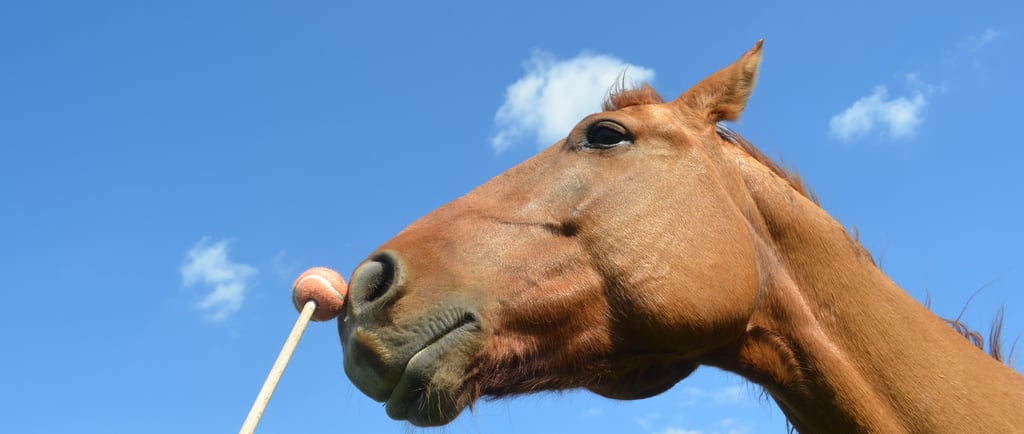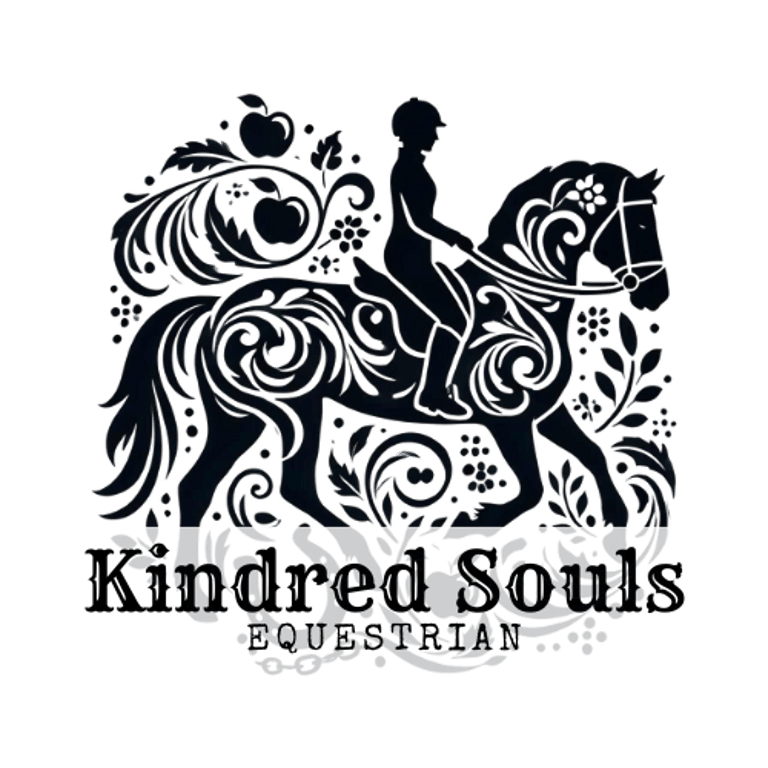101 Uses for Touch the Target Skill: Number 17
This post describes using the target skill to teach a horse balance through the shoulders in a liberty turn on the forehand. Image credit: https://when-it-clicks.com/2014/09/target-training/
TARGETINGTRAININGKISSING SPINE SKILLSLIBERTY
7/3/20253 min read


In my work with Catch, the OTTB with kissing spines, I have been focusing on helping him use his hindquarters and core to support his back. He has grade 3-4/4 Kissing Spine involving vertebrae T12-18 and L-1. I have been working with him for 9 months at the time of this posting and he has a solid repertoire of clicker skills and understands how it works. Specific to this post, he has learned to cross his inside hind under his belly when his stifle is touched with a whip, using only R+ techniques. Notice I didn't say tap. I use the whip to touch as a cue, not constant tapping as an aversive, in this scenario.
Skills I haven't taught him are moving away from me laterally when I touch his shoulder. I have done minimal work with a touch on his front legs to start turn on the haunch. He is also a horse who barges around with his shoulder (especially before I started working with him) when ever he wanted to tune out or when he gets frustrated. This is an ingrained bodily pattern with him now. So one thing I struggle with as I try to teach him to take consecutive steps in a turn on the forehand is that he tends to fall in on his shoulder because it is physically difficult for him to do multiple steps in balance, or it is just his bodily pattern, or both.
Another pattern he had before I started working with him is that he really didn't want me to be on his right side. So much so that he would do anything he could, usually back up and position me on his left side, to resolve this tension for himself. We have mostly resolved this problem, but there is a remnant of the behavior in the turn on the forehand to the right. When we do the turn on the forehand to the right, he only takes about two steps under in a forward direction. The next step he will rock back instead and position himself to face me front on. Now it appears to be a curiosity about the treat but I also think it's related to this old habit pattern.
The third issue I am having is that the exercises we are doing for this physical rehabilitation are starting to feel like drilling. He is bored and gets frustrated, I get bored and demotivated, but I feel like my efforts need to be focused on his back health and it feels like there are only so many things I can do for him. (there are things I can do next, like turn on the haunches, but other circumstances in my life have made it difficult for me to get the energy to start something new). So one day I went to the barn to work with him and my only agenda was to have fun. I know he loves liberty and I have fun doing that too. So we started with things he likes to do: stand on a mat, stand next to the mounting block, and liberty leading with the target.
Then I thought of turn on the forehand, it's not too boring and I wanted to experiment with doing it at liberty. We usually do it with a cavesson on so I can help him balance his forehand and have some guidance over his forward motion. So no surprise, he started to fall in on his shoulder and then he leaned into forward motion basically departing the movement. I didn't want to use the cavesson, that would spoil the mood. I thought about how I just used liberty leading with a target to help moderate his forward motion on an inverse round pen, so I decided to use the target to moderate his forward motion in the turn on the forehand. I had a dressage whip in my left hand to touch his stifle (my cue for turn on the forehand) and a target in my right hand to liberty lead his nose, showing him the forward pace I wanted him to have. I had the clicker on my right thumb. When I gave the cue and led him with the target, he had a perfect cross of the inside hind under his body with the right forward balance, he also stayed balanced on his shoulders because he was following the target with his nose. Of course I clicked this wonderful balance and repeated it several times, helping his mind encode the feeling.
I was delighted, he was delighted, it was a fun session and we made good progress on a movement teaching him balance. I discovered a use for the targeting skill.
Although this is my first post on uses for the targeting skill, I know there are many and this is not a basic skill so I picked number 17. Stay tuned for more uses of this super useful skill!
Image credit: https://when-it-clicks.com/2014/09/target-training/
Let's Talk
kindredsoulseq@gmail.com
(301) 887-3589
Copyright © 2025 Kindred Souls Equestrian - All Rights Reserved. Do not copy or reproduce without permission.
WEB DESIGN BY PAGES FOR MY PONIES
